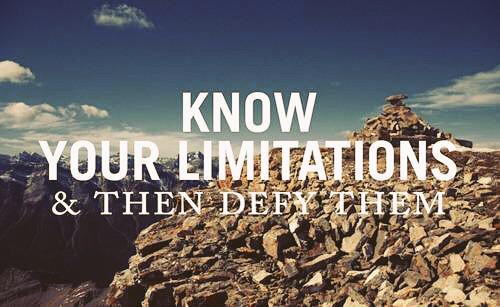The longer you ruminate on imaginary fears, the more your brain believes they are true. You’ll feel more anxiety, which then convinces your creative mind that your fears have greater validity. If your brain thinks the fear is real, it takes immediate action to get you out of harm’s way. So the next time you catch yourself worrying, just look around you. Is there a real threat in your environment? If not, just smile at that illusory memory and push it away with a warm compassionate hug!
After all, most of your worries are based on memories you’ve pulled up from the past and projected on the future. It’s not based on who you are, what your skills are, or what you are capable of. Nor is it based on what is happening in the present moment. So why do you give those worries so much power?
In With the New But Stuck With the Old?
Once we learn a new behavior or skill, it goes into long-term memory. When a similar event occurs, the brain automatically puts that behavior into action before we are even consciously aware we are doing so. It’s not “resistance” that is occurring, just habits we formed from previous experience that unfortunately interfere with learning new behaviors and skills.
To form a new habit, you’ll have to repeat the new behavior or thought pattern many times in novel and creative ways. Also, the more pleasure you feel as you learn a new habit or behavior, the more likely that new memory will be recalled. That’s why I recommend doing pleasurable activities while learning (enjoyable music, yawning, self-stroking of hands and arms, brief bouts of running, 60 second meditations, etc.) But when you are under stress, the old habits, which have more interconnected neural pathways, easily come to the surface.
To stimulate the intuitive circuit in your brain (insula-anterior cingulate-prefrontal lobe) you must first deeply relax and let your mind wander (daydreaming!).
Next, you use your “observing self” to watch – without judgment – all of the positive and negative thoughts associated with a specific goal or problem. It may take 10 minutes or 60 minutes, but if you listen closely and trust your imagination, “aha” experiences will emerge.
Now, integrate this “inner wisdom” with the “outer wisdom” of all your previous knowledge and learning. In this way, you make the best choices possible maintaining self-confidence and humility. There are over a dozen peer-reviewed studies that have mapped out this under-developed circuit in the brain, which isn’t fully operational until your mid-20s!
Keep a Daily List of Your Accomplishments
The brain registers small goals the same as large ones. Any goal, large or small, releases dopamine which gives your brain a pleasurable reward. If you fail at any goal, it triggers the release of stress hormones and lowers your motivation to pursue the next goal.
It takes longer to achieve large goals, so you’ll easily deplete the dopamine that motivates us to stay focused and take action. But each time we appreciate a tiny goal, a burst of dopamine is released from the nucleus accumbens, which is the center of your motivation-and-reward circuit.
NeuroTip: at the end of the day, write down all your small accomplishments and then meditate on the list. Stroke your hands and arms as you do so and immerse yourself in the pleasure of having achieved your goals. Positive psychology research shows that writing down your daily successes for just one week will gradually raise your self-esteem over the next 3 months!
Don’t Journal About Your Crap!
The more you write about a particular event that made you anxious, angry, or depressed, the more you will entrench it into memory. Solution: write only one sentence about the “problem” and then write about all the possible ways you can resolve it. In this way you’ll create a writing experience that is uplifting. The notion that it is healthy to express your negative emotions has been disproved by hundreds of psychological and neurological studies.
List Your Crap and Mindfully Observe Your Words
When you write down a worry or fear or negative feeling in a brief sentence, and then gaze at it (while remaining relaxed), your brain disconnects from the negative memories associated with that thought.
Keep a list of all of the negative thoughts and feelings that pop into your mind during the day. You might write down over 200, as I once did. But the next day you’ll notice that you may only have 20 negative thoughts. Then, on the third day, write down all of the positive thoughts and feelings you have. Train yourself on each succeeding day to generate at least 3 positive thoughts for every negative one you have (This is Fredrickson’s famous Positivity Ratio). The human brain is programmed to memorize negative thoughts because they are perceived as a potential threat. But when you put your negativity on paper, your mind relaxes, knowing that your “crap” is safely stored away!
Optimism Gives You Greater Access to Your Crap!
It’s true: the more you become motivated by positivity, the easier it becomes to gain access to your unconscious negativity. Optimism stimulates incredible creativity, and your imagination has no problem fantasizing about every possible positive and negative outcome in the universe. When this happens, use your optimism to remind yourself that the negative thoughts are mainly memories from the past. Just observe your “crap” without judgment, and you’ll see that they are just thoughts.
That’s the power of mindfulness, which is now considered to be one of the most effective ways to treat anxiety, depression, and stress.
Source
http://www.myneurogym.com/the-blueprint-for-building-a-fearless-you/





No comments:
Post a Comment